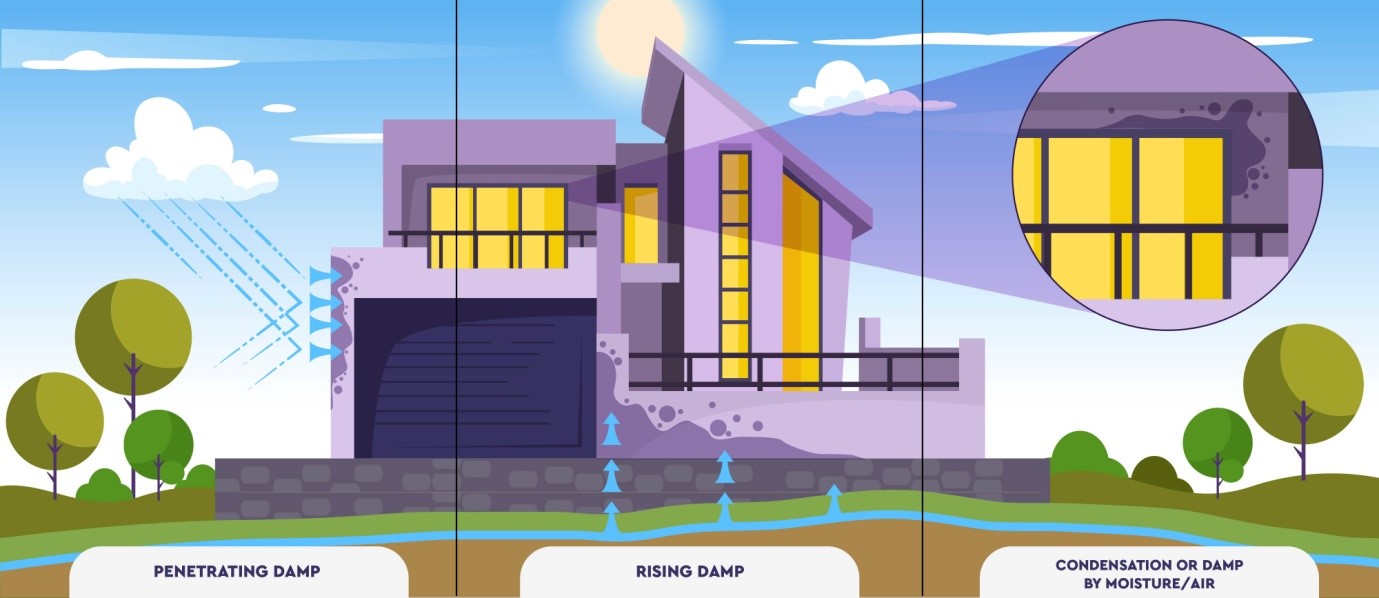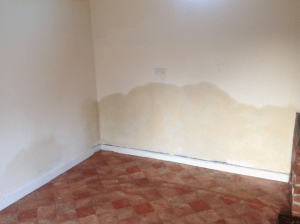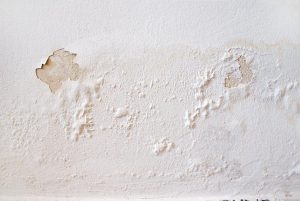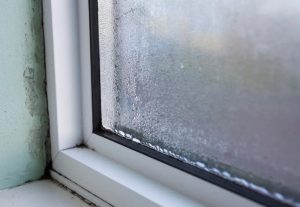
3 Common Causes of Damp on Walls with Recommended Solutions
Damp patches on the walls in the living room or bedroom not only deteriorate the building’s appearance but also damage the structure and health of the residents. Further, dampness may lead to the worsening of plaster, masonry, stones, and tiles while also deteriorating the timberwork and expensive wallpapers.
Unfortunately, wrong treatments for dampness cause more damage, and expenditures impact the residents both physically and financially. Neither sealing walls with tiles nor any other material provides a long-term solution or lets the walls breathe. This breathability is important for buildings and is required for building structures.
There are 3 common causes of dampness:
- Rising damp
- Penetrating damp
- Condensation or dampness by moistures/air
Let us discuss these three causes and their solutions in detail.
What is Rising Dampness?

Rising dampness is limited to the lower part of the walls and is caused by the capillary action of groundwater. Though the damp proof course is generally applied but they are usually ineffective. As a result, the damp-proof membrane or barrier cannot stop water to rise. If rising dampness is ignored, it can damage and impact the concrete, woodwork, and bricks. That is why it is important to have a perfect damp-proof solution to prevent dampness from appearing over and over again.
Let’s walk you through how to do that!
Recommendation for Rising Dampness Problem
In new constructions, instead of any membrane-based application in the damp proof course, good quality waterproof chemicals like Sturdflex should be used in DPC concrete that makes the entire DPC a water barrier. A Membrane or any plastic sheet used in DPC has a high possibility of tearing or breaking during masonry work.
In old construction, rising dampness can be solved by industrial grades cementitious coating on the mother surface of walls and by protecting coating with plaster. The waterproof coating should be air and vapor permeable so that dampness cannot come outside but can evaporate.
What is Penetrating Dampness?

The penetrating dampness is caused by water seeping through walls at any point. Usually, we have damp patches on the walls that have bathroom or sunken portions on the other side of the walls. Roofs, parapets, and any construction joints are the possible sources of rainwater penetrations. Prolonged rain with high intensity and poor materials used in the structure can cause water seepage even in vertical walls. Leaking drain pipes or fittings are some of the other prime sources of water seepage.
That is why it is important to have a perfect waterproofing solution to prevent penetrating dampness from appearing over and over again.
Let’s walk you through how to do that!
Recommendation for Penetrating Damp Problem
The water leaking source should be identified and repaired using waterproof coatings for old construction on the damp areas. For new construction identifying such sources and making them waterproof by applying waterproofing chemicals like Sturdflex is the approach that should be followed for lifetime relief from penetrating damp problems. In some cases, the house owner does not have control over water sources for example, if the water seepage source is the neighbor’s bathroom. In such scenarios, coatings and protective plasters can be done in damp areas. It would work similarly to the above treatment of rising dampness.
What is Condensation or dampness by moisture/air?

Warmness in the house can cause moisture to evaporate in the air. On the other hand, if the doors and windows are being shut, fresh air cannot replace air. As we all know, when humid air comes into contact with a cold surface, it condenses and cools droplets of water. In cold weather, the temperature of external walls is lower than the air indoors and hence moisture condenses and runs down on plaster or wallpaper. This results in the formation of damp spots on the walls, which in turn deteriorate the aesthetic beauty as well as the internal structure of the wall over a period of time
That is why it is important to have a perfect damp-proofing solution that can prevent condensation or dampness by moisture/air from affecting the walls.
Let’s walk you through how to do that!
Recommendation for Condensation or dampness by moisture/air
We can usually reduce the dampness by moisture/air by improving ventilation and insulation in the room. However, despite these measures in a tropical country like India where the temperature is continuously fluctuating, additional measures should be taken. We should use water-repellent chemicals on wall plaster to protect walls by providing positive waterproofing. There are chemicals available that can be simply sprayed even on existing plaster to prevent dampness or condensation from damaging the aesthetic beauty or internal structure of the wall.
Now that we know the 3 common causes of wall damps and how to overcome them. It is extremely important to find a reliable waterproofing expert who would provide you with these solutions. That is why Sturdflex!
Why Choose Sturdflex Waterproofing Expert
Sturdflex is a venture by Shyam Steel Group, one of India’s leading industrial houses, with a legacy of 7 decades. Sturdflex offers complete waterproofing solutions for your walls when you are constructing your home. The chemical and construction products’ imperial quality 4-step wall waterproofing solution can not only help you fight against dampness but also provide you with an economical and permanent solution. Further, with Sturdflex wall waterproofing you can now overcome damp problems for life while saving money on the yearly damp repair.
To know more about wall waterproofing solutions and damp repair for your residential, commercial, or industrial place, get in touch with us at:
- Toll-free– 1800 123 1003
- Whatsapp– 8100 55 66 77
- Email– help@sturdflex.com
